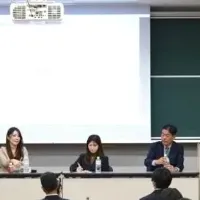
Redefining Global Education: The Changing Landscape of Study Abroad Experiences
The Evolving Study Abroad Landscape
The global education sector is experiencing a transformation, showcasing a new vision for studying abroad characterized by shifting student priorities, geopolitical challenges, and the emergence of non-traditional destinations. According to the 2025 Blue Book on China's Study Abroad, presented during the China Study Abroad Forum (CSAF) in Beijing on April 11, the United States, once the foremost choice for Chinese students, now ranks fourth in popularity. The UK, Singapore, and Canada have taken the lead as preferred study locations.
At the forum, themed 'Quality, Trust, and Safety For the Sustainable Development of International Education', discussions centered on the changing dynamics of global education and student mobility. The CSAF was held alongside the 30th China International Education Exhibition Tour (CIEET), which took place across key Chinese cities like Beijing, Shanghai, Wuhan, and Guangzhou. Since its inception in 1999, CIEET has brought together educational institutions worldwide, enabling them to forge connections with Chinese students and foster educational partnerships.
Xu Qingsen, the Vice Minister of Education in China, participated in the forum, reiterating the country’s commitment to enhancing both inbound and outbound educational exchanges. He highlighted the importance of improving services for students abroad while also attracting more international students to China. This emphasis on education as the foundation for international civic relations was echoed by other forum participants. Maria Fasli from the University of Essex underscored the necessity of global cooperation in addressing modern challenges, calling upon educational outcomes to produce globally aware graduates.
The Blue Book, compiled by over 30 experts assessing 28 countries on various metrics, revealed significant diversification among students' choice of destinations and academic programs. Despite the U.S.'s dominance in quality of education and student employability, it struggled in categories such as safety and trust, ranking poorly in these areas.
Heightened concerns surrounding geopolitical tensions, restrictions on academic freedom, and safety advisories have led Chinese students to reconsider their options. Recently, China's Ministry of Education issued warnings for students contemplating studies in certain U.S. states, especially after Ohio passed a law that curbs educational ties with China.
While students continue to gravitate towards familiar locales like the U.S., UK, and Australia, this year’s CIEET showcased universities from 24 other nations, including lesser-known participants from Belt and Road Initiative countries such as Kazakhstan, Hungary, and Poland. For instance, one student, Chen Bi, opted for a master's program at Al-Farabi Kazakh National University in Kazakhstan, highlighting its affordability and accessibility as major draws.
However, choosing non-traditional destinations comes with challenges. Many employers remain skeptical about graduates from these lesser-known institutions, potentially putting them at a disadvantage in the job market. Wang Daquan of the Chinese Service Center for Scholarly Exchange (CSCSE) pointed out that their employment consulting services are designed to connect returning students with potential employers, with over 310,000 students already benefiting from their platform.
Today’s students are looking for more than just a diploma; they seek practical skills, cultural literacy, and a global perspective, as emphasized by Wang during his keynote address. In response to these evolving needs, CSCSE has initiated a Global Study Mobility Alliance that involves 20 universities from both China and abroad, alongside new programs that promote short-term cross-cultural educational exchanges.
As the landscape of international education continues to evolve, it becomes increasingly imperative to understand the influences that shape student choices and the broader implications for global educational policies and collaborations.
Topics Other)










【About Using Articles】
You can freely use the title and article content by linking to the page where the article is posted.
※ Images cannot be used.
【About Links】
Links are free to use.